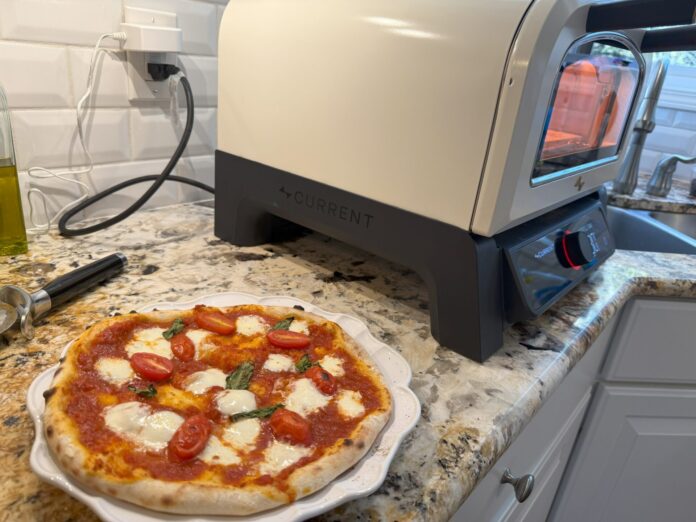Disclosure: This article may contain affiliate links. If you buy a product through an affiliate link, we may receive a commission at no cost to you.
Current Backyard is a new outdoor cooking brand that specializes in electric cooking. They released the Model G last year, which is the best electric grill out there, and they followed it up with the Model P, an electric pizza oven. With the release of the Model P, Current sent us an oven to try out.
I just called Current Backyard an outdoor cooking brand, but that’s not completely correct with the Model P. It’s built to use inside or outside, which is really nice because it’s not always convenient or fun to cook outside.
The biggest thing that I wondered before testing the Model P, is can it compete with a gas pizza? You can read on for all the details, but it’s resounding yes. It gets the same great crust, and it’s easier to use with its smart features.
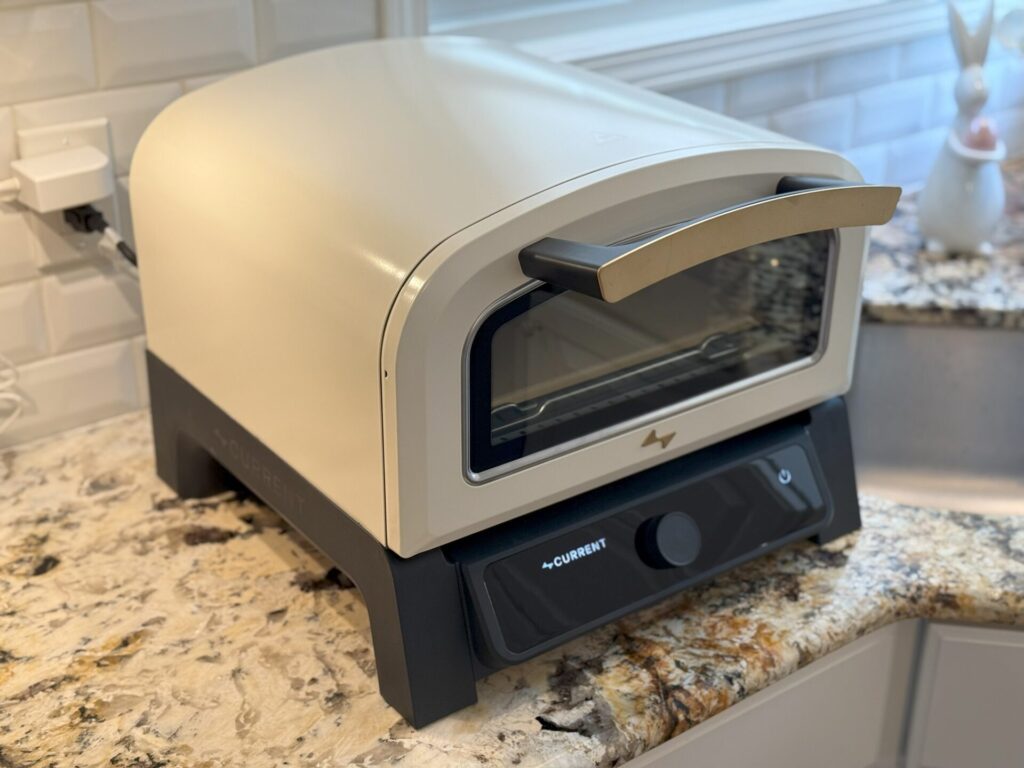
Features and Specs
- Retail price of $699 (check price)
- Max temperature of 850 degrees F for a perfect crust
- Can cook a pizza in two minutes
- 12” Cordierite cooking stone for heat retention between pizzas
- Has five different cooking modes – Neapolitan, New York, Thin Crust, Frozen, and Broil
- Comes in two colors, Sand or Slate
- Has a 10-year limited warranty
Assembly
If you can open a box, you can setup the Model P. There’s no real assembly other than adding in the stainless steel rack and pizza stone. This saves you valuable time from enjoying delicious pizza.
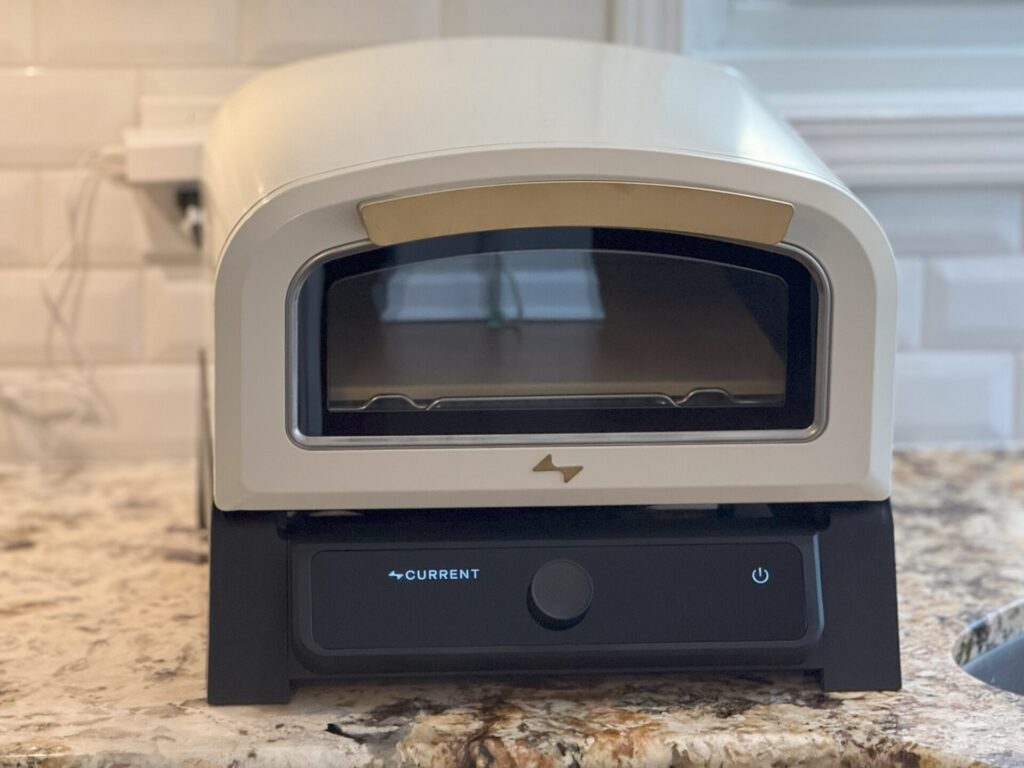
Cooking
This is the easiest pizza oven to cook on. With a gas oven, unless it has a rotating pizza stone, you have to develop some pizza peel skills to constantly turn your pizza. You also have to develop an eye for how high the flame should be, and when.
On a wood pizza oven, add fire management into the mix, which adds another layer of complexity. Using electricity as a fuel source solves all of this.
The electric heat element is underneath the pizza stone, and evenly heats the whole thing. It’s not like an oven with a fire where it’s hottest in front of the flame.
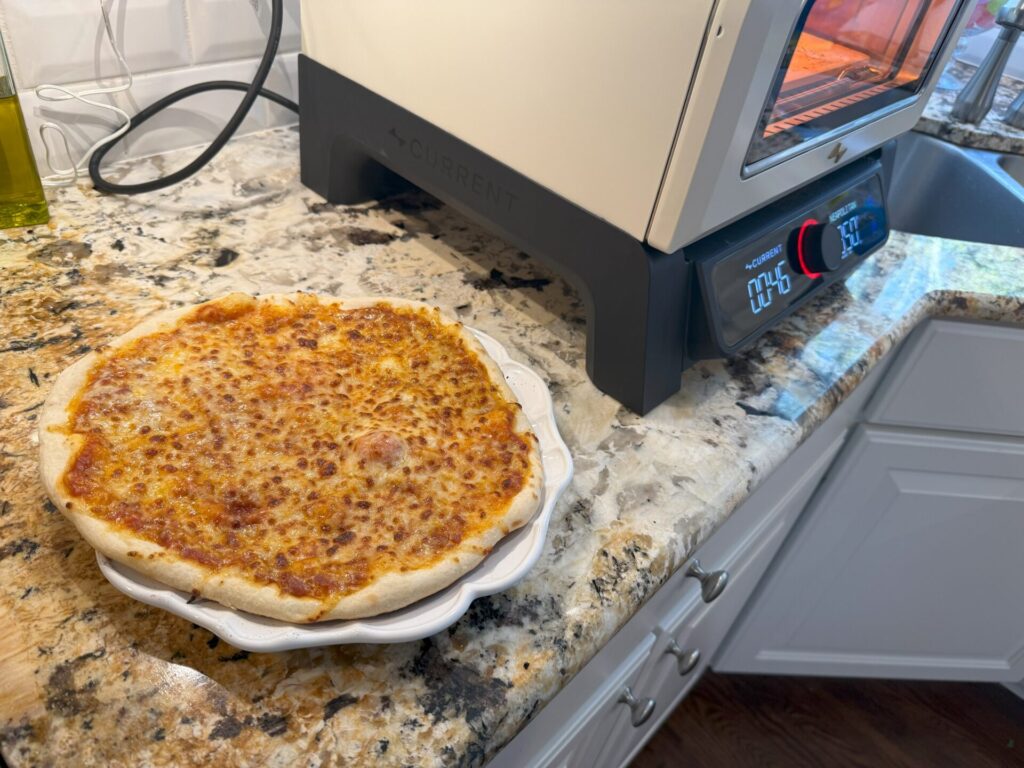
That allows you to pop your pizza in the oven and cook like a kitchen oven. It even dings when it’s done cooking.
For people worried about losing flavor from cooking with electricity, gas gives no flavor to your food. You could argue cooking with wood does, but a pizza cooks in two minutes, so there’s very little flavor you can even add in that time. I doubt if you could even tell the difference.
Digital Display
Another benefit of cooking with electricity beyond heating, is it gives the ability to power technology. On the display, one side is a timer and the other side is the temperature.
You can spin the dial between cook modes, then if you want, manually adjust the temperature a little bit from the preset for pizza type. One thing I will say is I wish there was a pure manual setting where you could go lower than broil. It would be nice for cooking other food at a lower temperature.
The Model P couldn’t be easier to use. When it warms up, launch your pizza in the oven, then press the dial to start the timer, and it lets you know when it’s done. It’s really that simple.
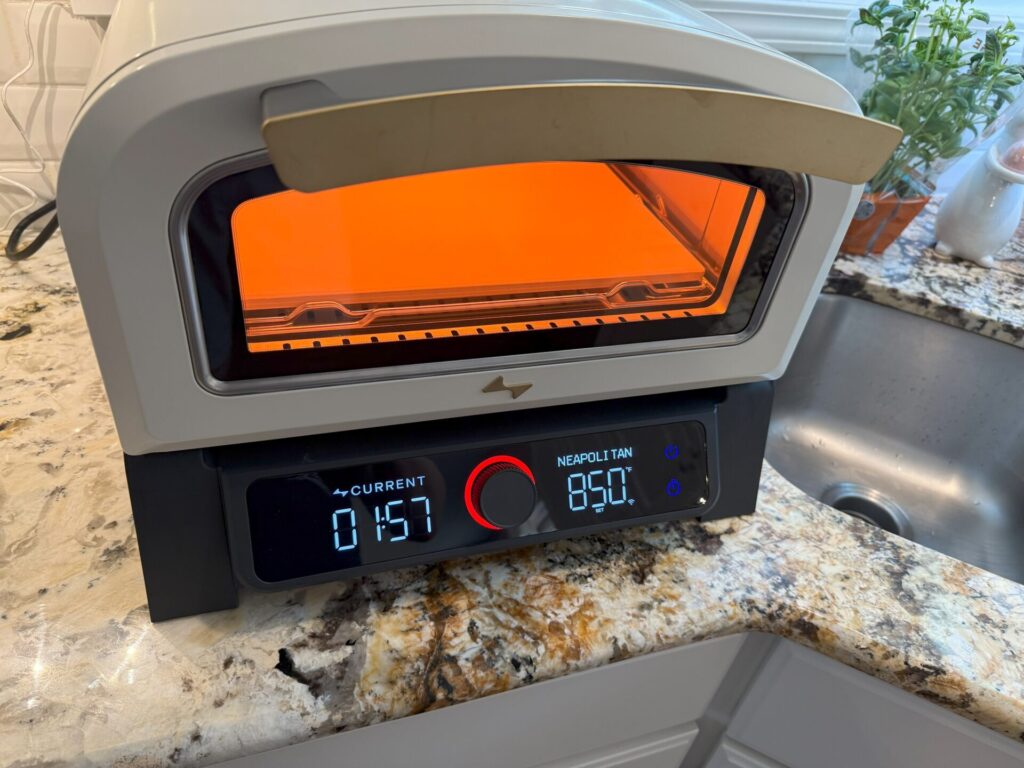
It’s a really basic thing, but I really like having an onboard timer. What I do when cooking with other ovens because I like having data, is I start the timer on my phone and use that while cooking. I use it not only for total cook time, but also as a rough gauge on when I should turn the pizza. It’s not all that convenient, and I end up with a dirt phone.
Smart Oven
Besides the display on the oven, you can also use the Current Backyard app. I didn’t have any trouble connecting it to the oven, and it has a nice interface.
I think what people will find the most helpful with the app is you can build your pizza on it and it will adjust the timer on the oven for the perfect cook. Other than toppings, it has the option for how done you want it and other preferences like that.
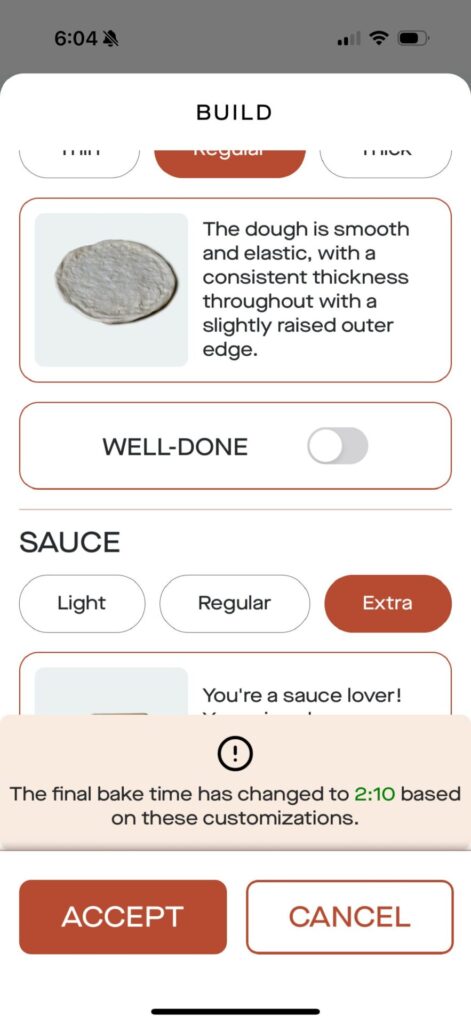
It makes cooking on the oven more accessible, and it’s nice for if you cook outside, because you can tell when it’s warmed it remotely. You’d probably use it less for cooking pizza once you get more skilled with cooking pizza, but it’s a nice to have.
Warm-Up Times and Heat
One thing that keeps people away from cooking with electricity is the perception that it won’t get as hot, or it will take a long time to heat up. That was something I tested, and had no issues with.
Most backyard gas pizza ovens that I’ve used heat up to 850 degrees in around 15 minutes, give or take. The Model P took about 20 minutes to get to 850 degrees.
Keep in mind 850 degrees is ripping hot, and it’s impressive it can get that hot. If you’re cooking at a lower temp, it will take less time than that.
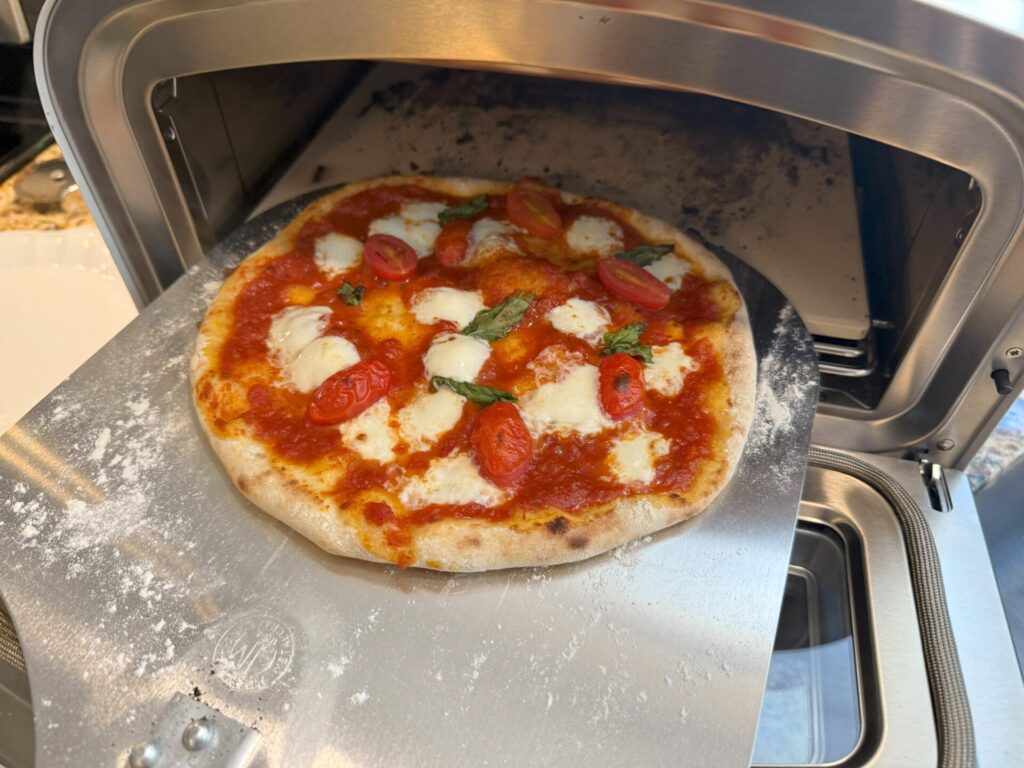
The pizza stone does a good job holding in the heat, so you can cook pizzas back to back without needing much time in-between. The oven will ding in-between pies when it’s heated back up, but I’m pretty sure that’s the air temp and not necessarily the stone temp.
If you’re a perfectionist give it a little bit longer after the ding to heat the stone back up. That’s also something you have to pay attention to on gas ovens.
As a reference though, I cooked five basic pizzas back to back without giving it much time, and they all turned out well. My original starting temp was 780 degrees F, and at the end of the cook, the stone was around 560 degrees F as measured with an infrared thermometer.
I also was curious about how hot the outside of the oven got, since it’s made for indoor use, and it wasn’t as hot as I expected. It gets to about 200 degrees F, which is not a temp you’d want to rest your hand on, but it’s also not bad considering how hot the inside of the oven is.
Cooking Tips
Besides letting the heat recover, like I mentioned above, I also found the preset Neapolitan temperature to be higher than I wanted. At 850 degrees on a basic cheese pizza for the kids, the cheese was getting a little too black. I found 780-800 degrees F was better with the dough and types of pies I was making.
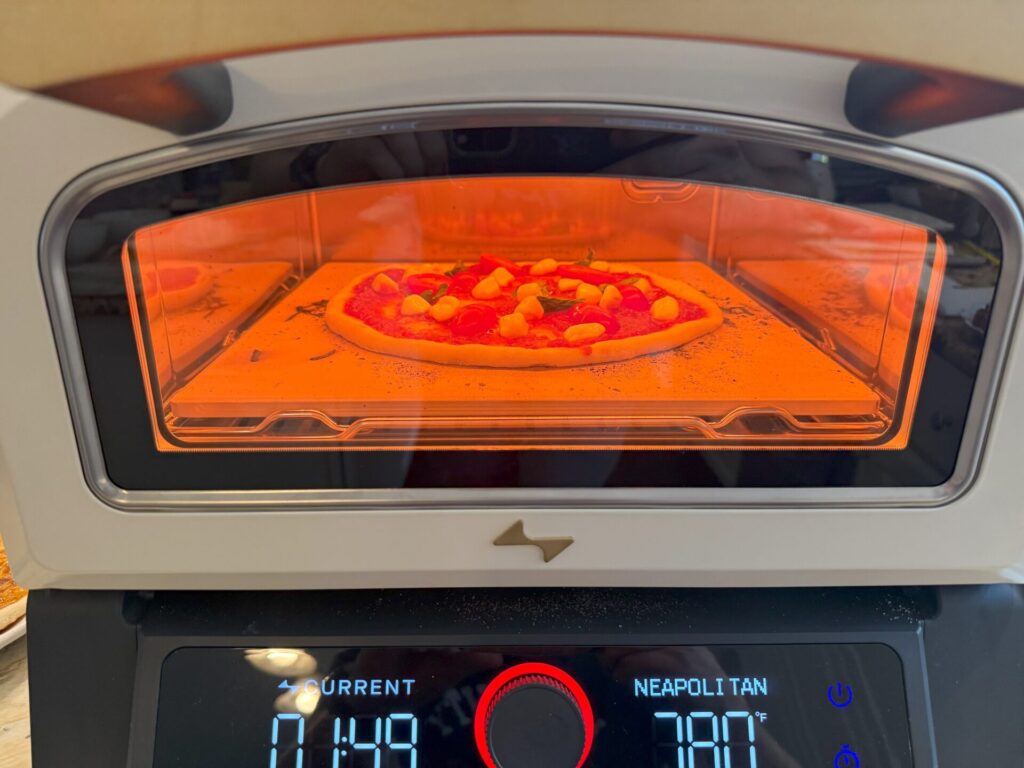
Along with that, all the tech is nice, but let it override what you’re seeing with your eyes. If your pizza is burning, but there’s still time left on the timer, ignore it and pull your pizza.
The benefit of cooking with a pizza stone is it retains heat to cook the crust. With that, just like turning down a gas oven, if you’re crust isn’t getting that leopard coloring but your toppings are burning, open the door for a little bit. The crust will still cook, but it will take some of the heat off the top.
I also always have more dough to start with than I need. It’s so fast to cook pizza, and it takes the pressure off. If you burn one, or it sticks and gets crumpled on the launch, no big deal, you can make another.
Pros
- Great price for the capabilities
- Performs well
- Easy to use
Cons
- Can’t cook with low heat
- Had to dial-in the temps a little
Conclusion
The Current Backyard Model P makes cooking restaurant quality pizzas at home even more accessible. It gets as hot as gas or wood ovens, and you don’t lose any flavor. The ability to use it indoors means you can cook pizza any time of year or weather. It’s all around a great pizza oven.
